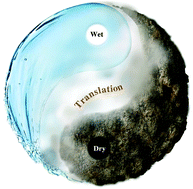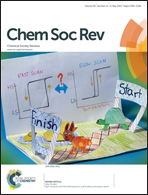A dynamic surface enhanced Raman spectroscopy method for ultra-sensitive detection: from the wet state to the dry state
Abstract
Surface-enhanced Raman spectroscopy (SERS) has been demonstrated to be an excellent analytical tool for a wide range of research and practical applications owing to its ability to achieve highly sensitive detection and provide fingerprint information for analytes. Improving the sensitivity of SERS is beneficial for the rapid analysis of target molecules in various systems, where the ultimate goal is to obtain quantitative analysis and detection. Considerable efforts have been made to develop new methods for SERS detection that improve upon its high sensitivity and reproducibility. In this tutorial review, we first introduce the traditional methods for SERS detection and then report in detail on the features of a new strategy for implementing SERS. This new method, namely, a dynamic surface-enhanced Raman spectroscopy method proposed by our group, is based on state translation nanoparticle-enhanced Raman spectroscopy (STNERS) from the wet state to the dry state. Notably, during this process, a three-dimensional (3D) hotspot matrix that can hold hotspots between every two adjacent particles in 3D space, with minimal polydispersity of the particle size and maximal uniformity of the interparticle distance, can be simply achieved. Experiments and applications using STNERS are reviewed starting with an investigation of STNERS mechanisms and a discussion of sample preparation. Next, evidence of the advantages of STNERS and practical applications are discussed. Finally, the future outlook for STNERS and the development of STNERS as an ultra-sensitive detection method are also discussed.


 Please wait while we load your content...
Please wait while we load your content...